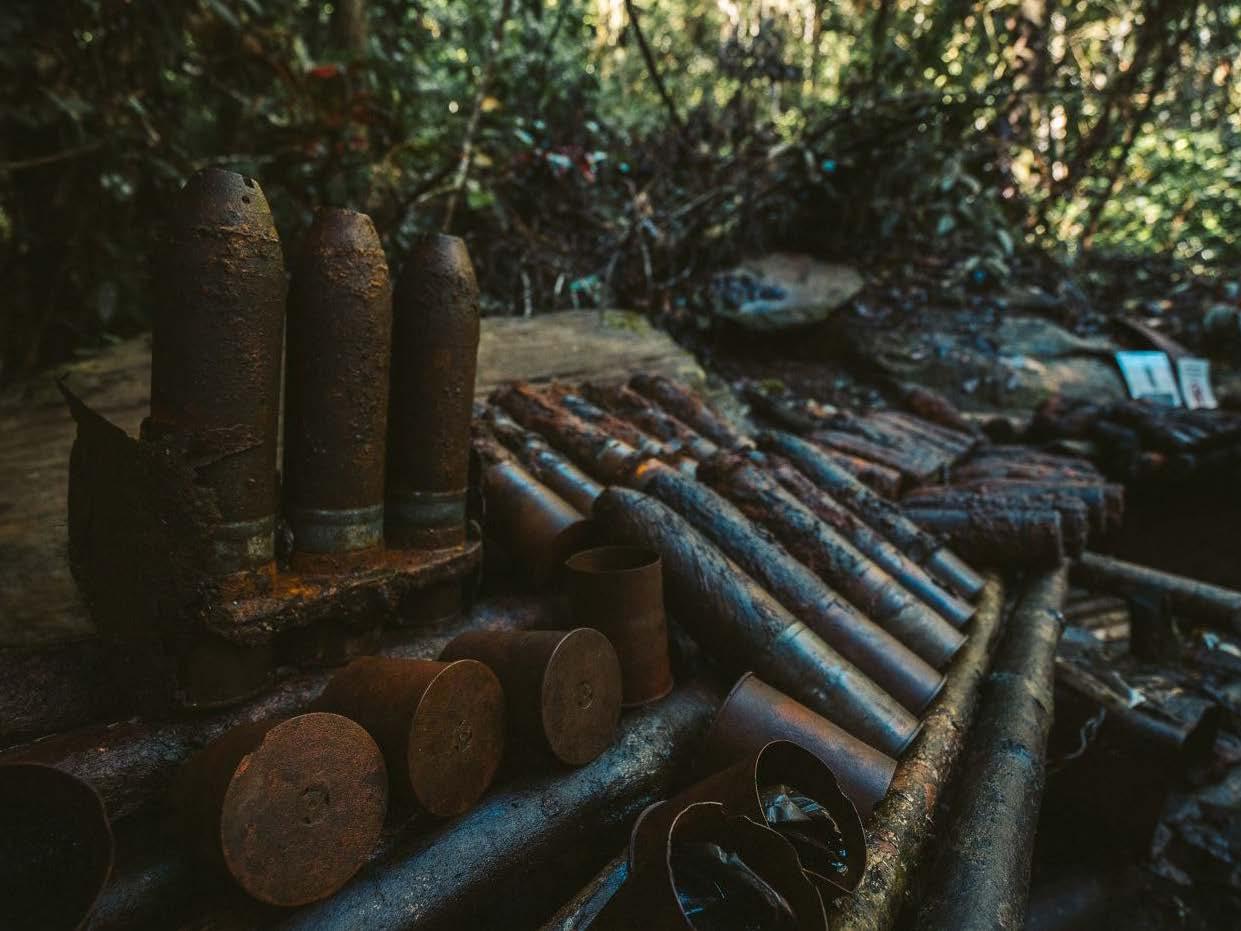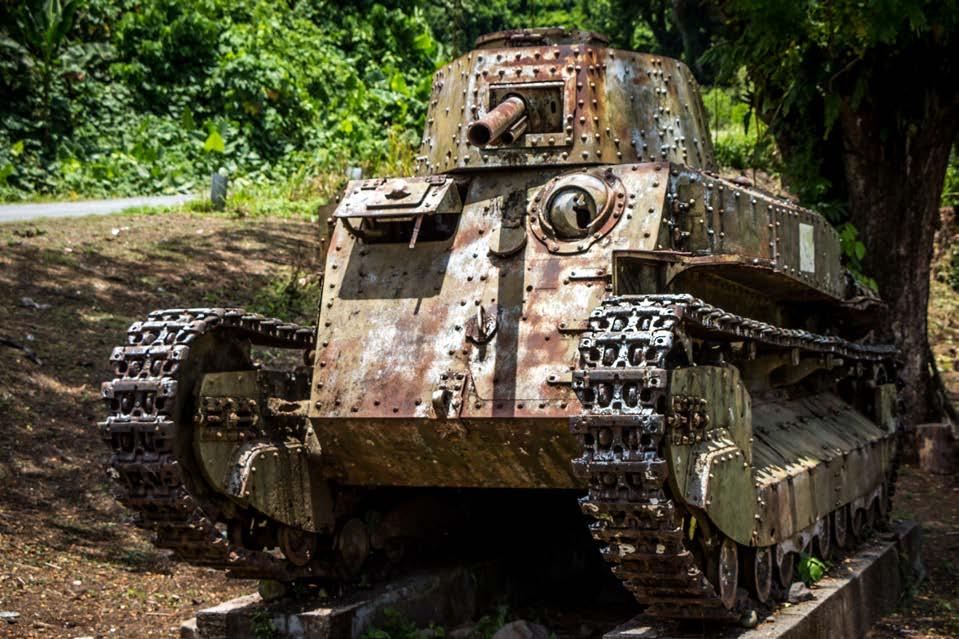
2 minute read
BATTLE TRAIL
A WWII aircraft sits abandoned in jungle on what was once a military airstrip, Aitape
Kokoda, Credit: Jackson Groves, #journeyera

For a relatively young nation, Papua New Guinea boasts a captivating history which has been interspersed with political intrigues and a bloody world war.
During WWII, the Japanese set their sights on capturing PNG which they believed would secure a foothold in the South Pacific and lead to regional domination. The New Guinea Campaign is the broad term used for the battles that ensued between the Japanese and Allied Forces between January 1942 to August 1945. Intricate strategies and bloody combats marked an unsettling period in PNG and many lives were lost on both sides. Here’s a snapshot of some of the major battles and events that occurred in the region during WWII. January 1942: Japanese troops capture the township of Rabaul on East New Britain to utilise as a base. Over the next twelve months, they build infrastructure that will support a range of aircrafts and naval ships.



March 1942: Japanese troops take Lae and Salamaua without resistance. Meanwhile, the Allied Forces establish Port Moresby as a strategic war base.
July - August 1942: Japanese troops capture Buna in the Oro Province.
25 August 1942: The Battle of Milne Bay highlights the Japanese Force’s first defeat on land over a period of just two weeks at the hands of the Allied Forces.
September 1942: The famous Battle for Brigade Hill rages along the Kokoka Trail where many Australian soldiers perish trying to hold Japanese Forces from advancing closer to Port Moresby. In the first instance, Australian troops are forced to retreat, but later regroup to charge in a counter attack from Imita Ridge to recapture Kokoda. Today, the Kokoda Trail is an emotional trek for many visitors to the region who get to experience first hand the arduous conditions that WWII troops encountered along the trail.
November 1942 - January 1943: The Battle of BunaGona sees Allied Forces attack Japanese troops that are based at Buna. It is a messy battle with the Allied Forces initially beleaguered by rugged jungle conditions and strong opposition from the enemy. Finally, the Allies secure the region but not without many casualties on both sides.
April - September 1943: The Salamaua-Lae Campaign leads to the Allied Forces securing Lae on 16 September.
November 1943 - March 1944: The Huon Campaign comprising of a number of battles extends over five months along the Huon Peninsula on the north-eastern region of PNG. It aids the Allied Forces to push Japanese troops further north away from strategic positions such as Port Moresby and Lae.
September 1943 - April 1944: The Battle of Shaggy Ridge marks a number of battles that take place within the Finisterre Range, commencing at Ramu Valley and ending in Madang with the Allied Forces dominating.
November 1944 - August 1945: In 1942, Aitape is taken by the Japanese but later recaptured by the Allied Forces in 1944. The Aitape-Wewak Campaign sees the Allied Forces head east toward Wewak to decimate the dwindling Japanese troops. Cape Wom serves as the location where the Japanese finally surrender in August 1945 heralding the end of WWII.










